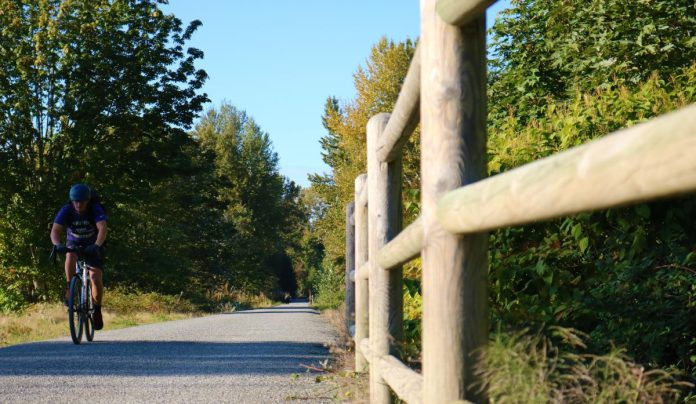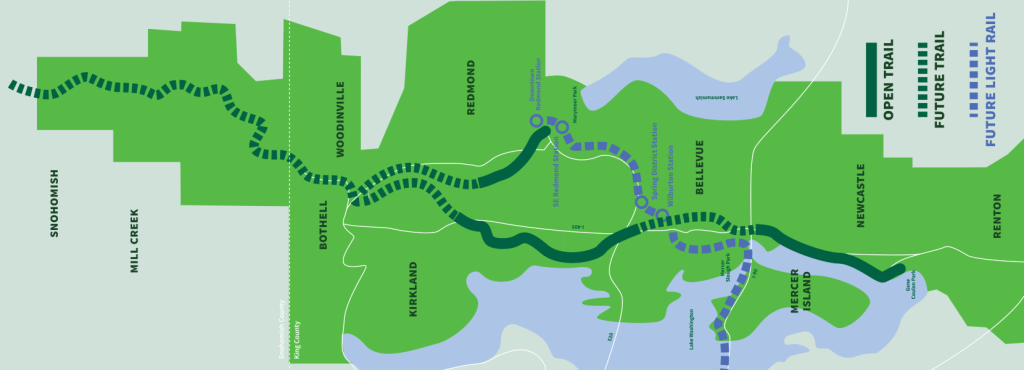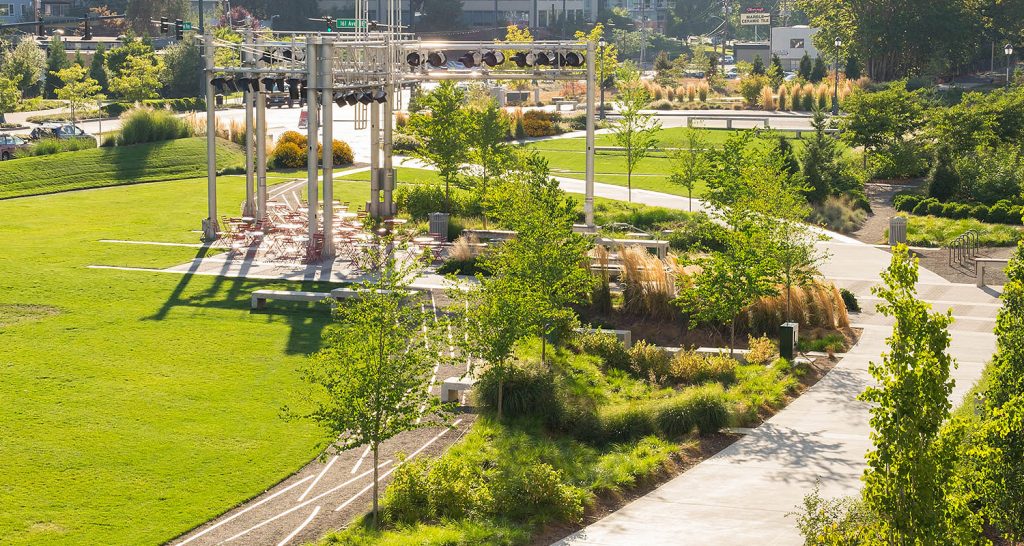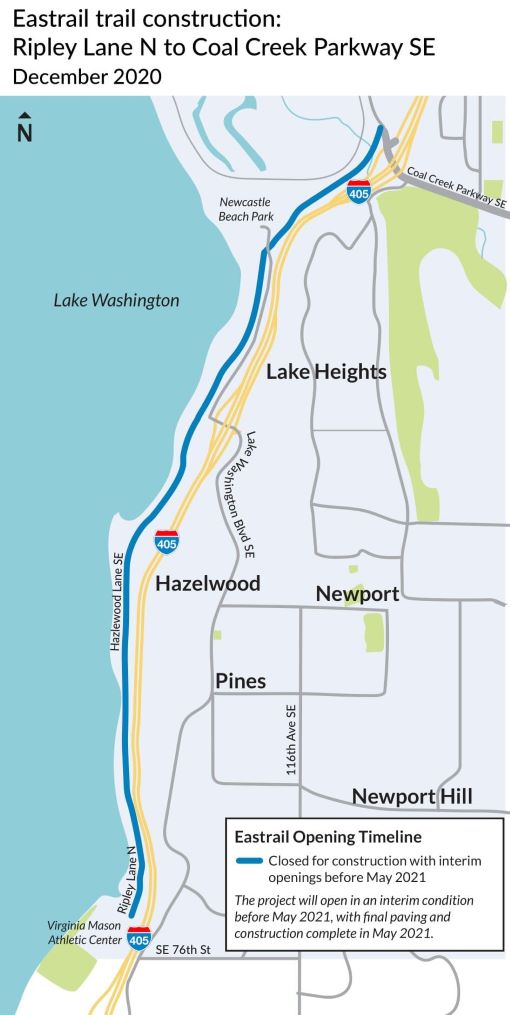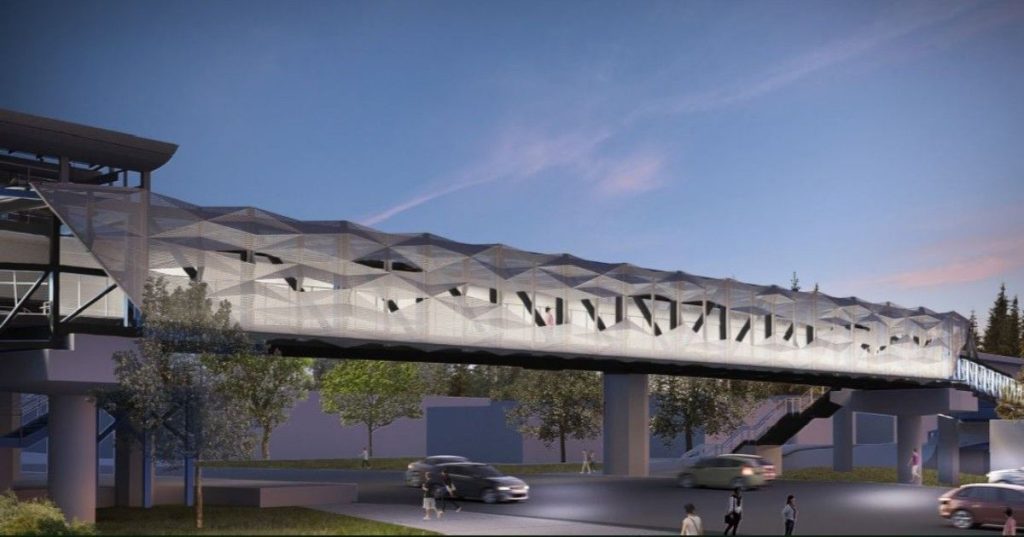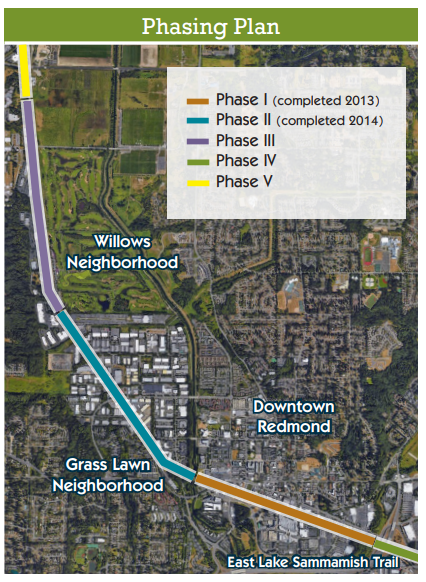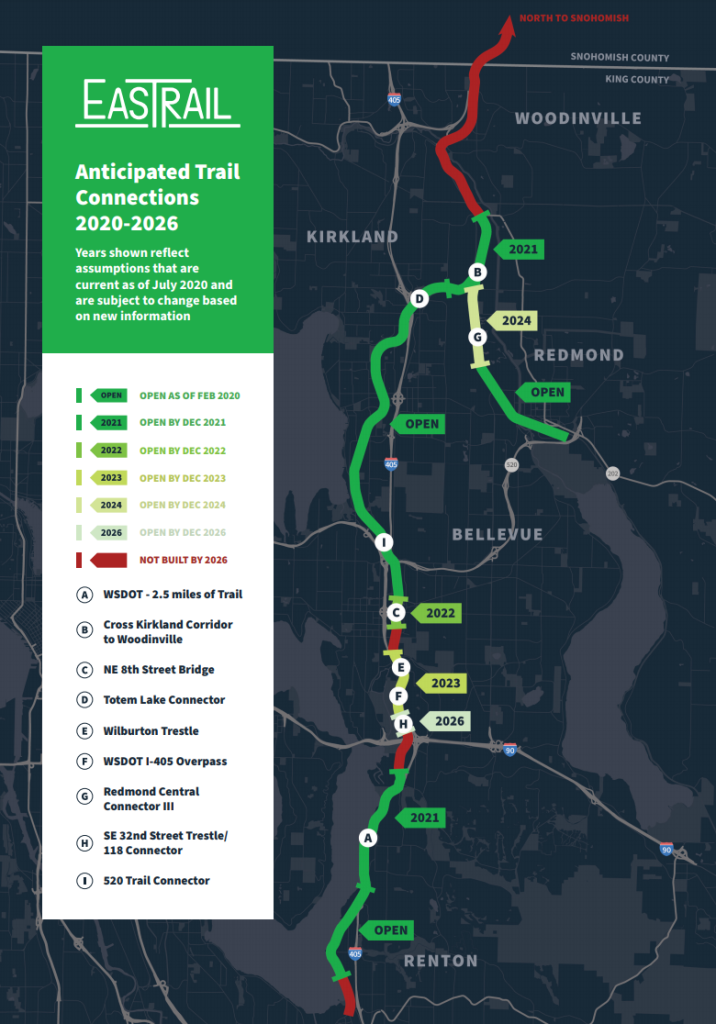Underway in the Eastside is an effort to unify isolated railway-turned trails into a regionally unrivaled trail. Named Eastrail in 2019, the planned trail network could eventually create an uninterrupted 42-mile trail — more than double the Burke-Gilman Trail — connecting Renton and Snohomish via Bellevue, Kirkland, and Woodinville. A branch will also connect Redmond, and a few of the East Link and Downtown Redmond Link stations expected to open in 2023 and 2024.
A bit over a decade ago now, Eastrail’s or the then Eastside Rail Corridor’s footprint was all railbed. Only in 2009 did the Port of Seattle and King County purchase the corridor from BNSF Railway, and soon after interested cities began to purchase their respective segments of the corridor. Kirkland and Redmond acted first, acquiring their fractions of trail and improving them. Kirkland has improved a 5.75-mile part of Eastrail, known as the Cross Kirkland Corridor, that opened in 2015. Redmond purchased their fraction in 2010, and phased out improvements over five stages. Phase I and II of the Redmond Central Connector (RCC) were finished in 2013 and 2017, connecting Downtown Redmond up to the PSE Powerline Trail. The remaining phases are still in planning and seeking full funding.
Incoming Improvements
The first Eastrail improvement to come in 2021 is the 2.5-mile improvement by the Washington State Department of Transportation (WSDOT) expected to be complete in May. The interim trail segment between Renton and Bellevue is being improved as a part of the unfortunate project to widen I-405 between Renton and Bellevue. This section of the interim gravel trail that opened in 2018 will become a 12-foot paved trail with gravel shoulders, improvements to the rest of the interim trail that extends down to Gene Coulon Park are forthcoming. A second phase of this WSDOT improvement will build a trail bridge over I-405 in Bellevue, which is expected to be completed in 2023 with the Wilburton Trestle.
The other 2021 Eastrail improvement is expected to be completed up in Woodinville this summer. This improvement mostly expands on Kirkland’s Cross Kirkland Corridor by reaching up to its northern neighbor, and completes the Willows Road Regional Trail Connection in preparation for the remainder of the Redmond Central Connector to open. These improvements mostly just involve removing railroad rails, and in Woodinville it’ll only continue up to NE 145th where the City is expected to build a new trail crossing to allow connections to the Sammamish River Trail.
After 2021, the next anticipated improvement is the NE 8th Street Bridge in Bellevue, opening in 2022. After that is the aforementioned Wilburton Trestle and WSDOT I-405 Overpass in 2023. Notably, Bellevue isn’t an Eastrail owner unlike Kirkland and Redmond. Though that may be because much of the trail within Bellevue has to navigate highway crossings that create a hairy environment that has to navigate the County, Sound Transit, and WSDOT. A SE 32nd Street Trestle/118 Connector is also planned in Bellevue for 2026.
Redmond’s segment of Eastrail is expected to connect with Kirkland’s share with a 1.6-mile improvement in Phase III. Phase III is now estimated to be completed in 2024, delayed from an earlier 2022 estimate. Redmond hasn’t committed funding to it yet and the 2024 expected completion timing is dependent on inclusion in the City’s 2023-2024 capital plan as well as grants and other funding. Phase V is the aforementioned Willows Road Regional Trail Connection, expected to be completed this summer. Lastly, Phase IV will connect the Redmond Central Connector with the East Lake Sammamish Trail and should open 2024. The RCC/East Lake Sammamish Connection will be built by Sound Transit as a part of the Downtown Redmond Link Extension project.
What’s left to plan
Looking at King County’s Eastrail Anticipated Trail Connections 2020-2026 map, we also see red where planning is early or unfunded. Starting from the southernmost streak, we arrive at the Gene Coulon Memorial Beach Park where the old Eastside Rail Corridor rails are still planted. The park already has its own system of trails, but without improvements to the Eastrail portion of the park there isn’t a straightforward connection between Eastrail and the rest of the Lake Washington Trail and Cedar River Trail. In Bellevue, two gaps remain, one between the NE 8th Street Bridge and the Wilburton Trestle, and the other that requires a connection over I-90. Then, in Woodinville most of its track still needs to be planned for improvements.
In Snohomish County, activity has picked up to start work on their fraction of the Eastrail, also known as Centennial Trail South. The County purchased its railroad right-of-way from the Port of Seattle and King County in 2016. Initial design is complete. Public outreach and environmental document preparation are anticipated to occur this year. After that, permitting stages and final design will follow the securing of construction funding. Phased construction is estimated to happen from 2022 to 2024, but that of course is reliant on funding.
A unified Eastrail would provide the Eastside with a pedestrian and bike spine. Today, only roughly 13 miles of Eastrail is open. That number will tick up a little by the end of the year, but we’re still a far cry from the potential 42 miles. Intersection and proximity with the East Link Extension also present an interesting trail-to-rail connection for sustainable transportation. Some localities like Kirkland and Redmond have stepped up to help realize this opportunity, but others have yet to. Especially if you live in a city with unimproved Eastrail and support the unified trail system, let your county and city representatives know that you and they should support a green and useful improvement to our region.
Now for the real question, will the entirety of Eastrail or Burke-Gilman Trail’s Missing Link be finished first?
Shaun Kuo is a junior editor at The Urbanist and a recent graduate from the UW Tacoma Master of Arts in Community Planning. He is a urban planner at the Puget Sound Regional Council and a Seattle native that has lived in Wallingford, Northgate, and Lake Forest Park. He enjoys exploring the city by bus and foot.

